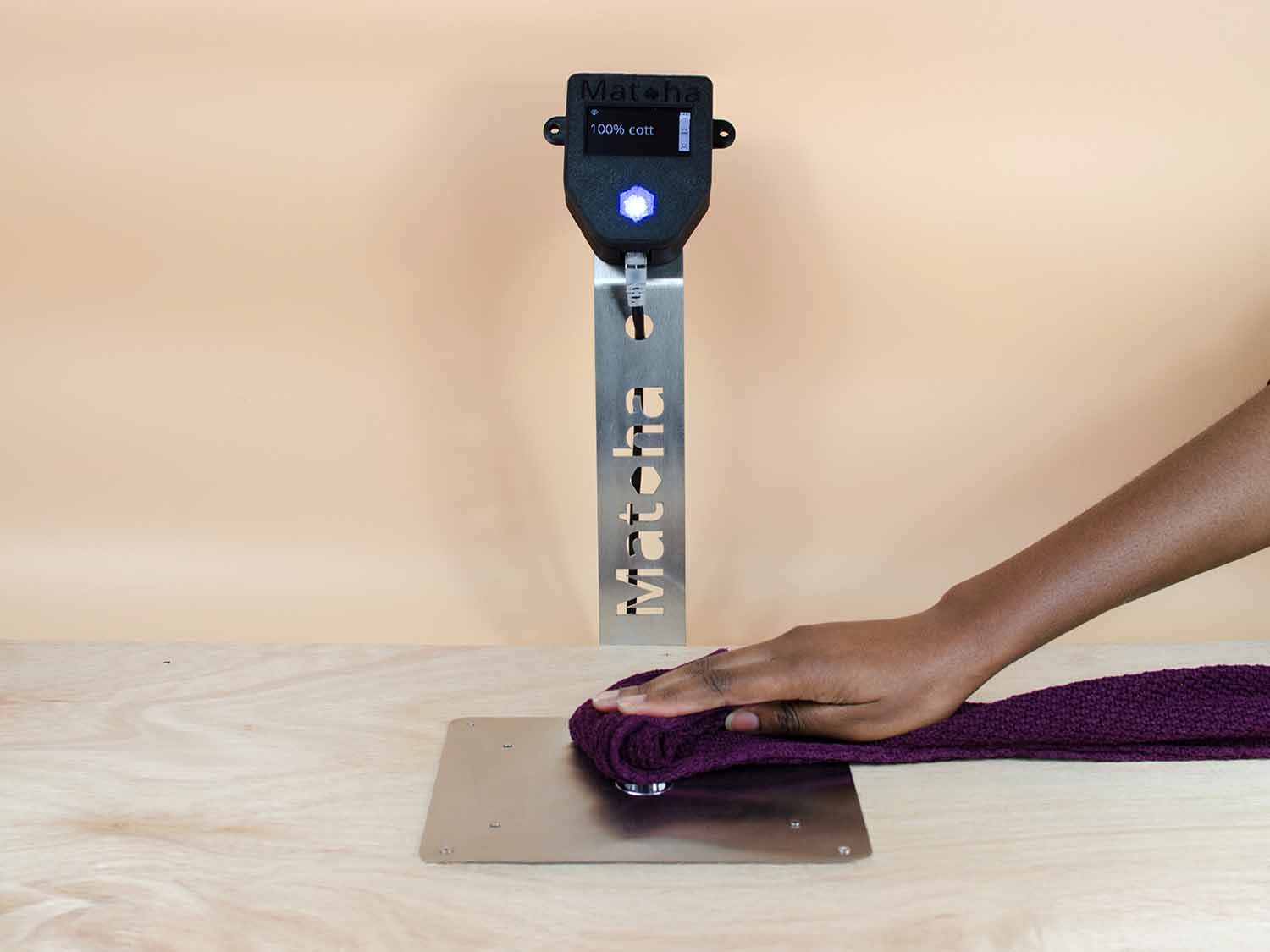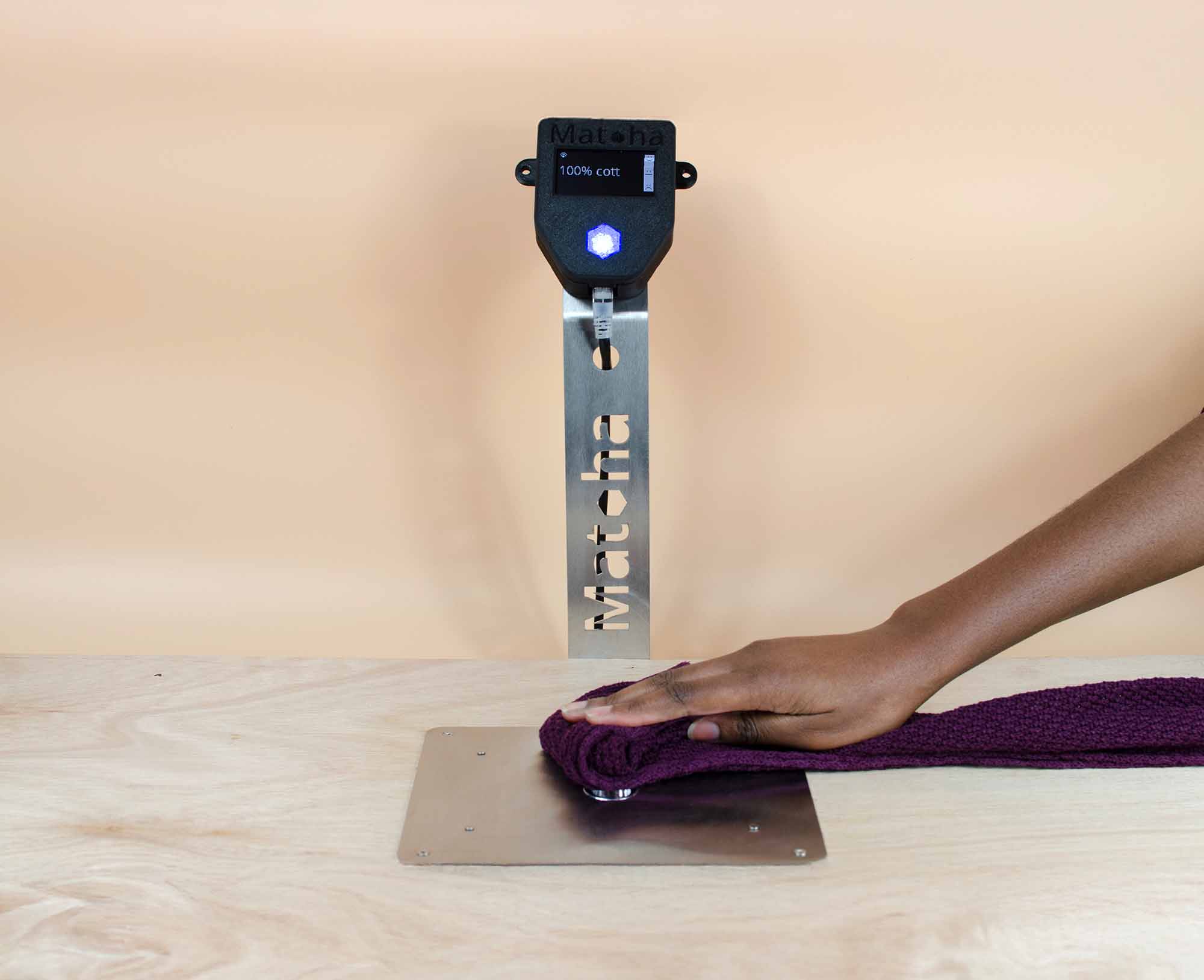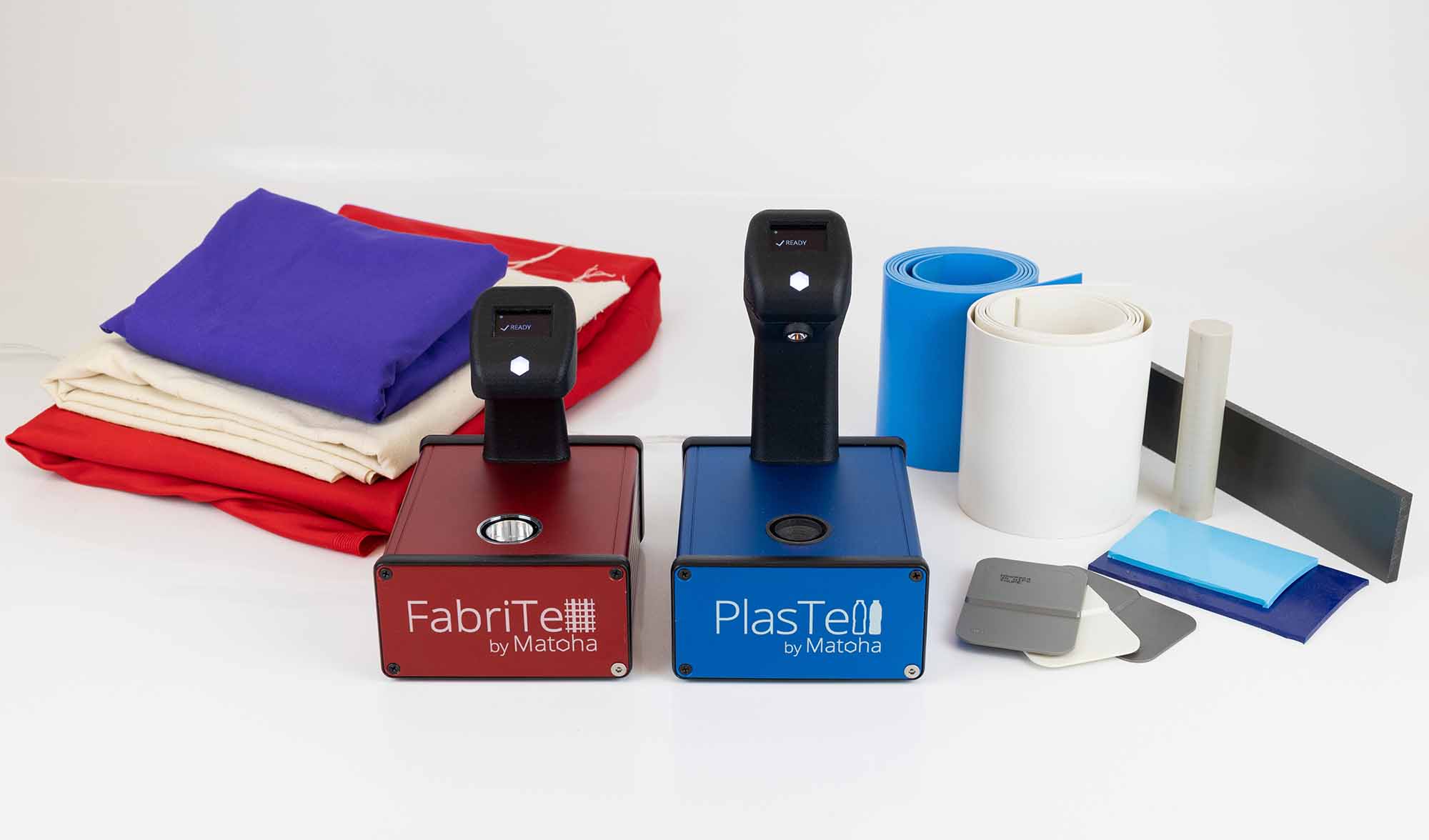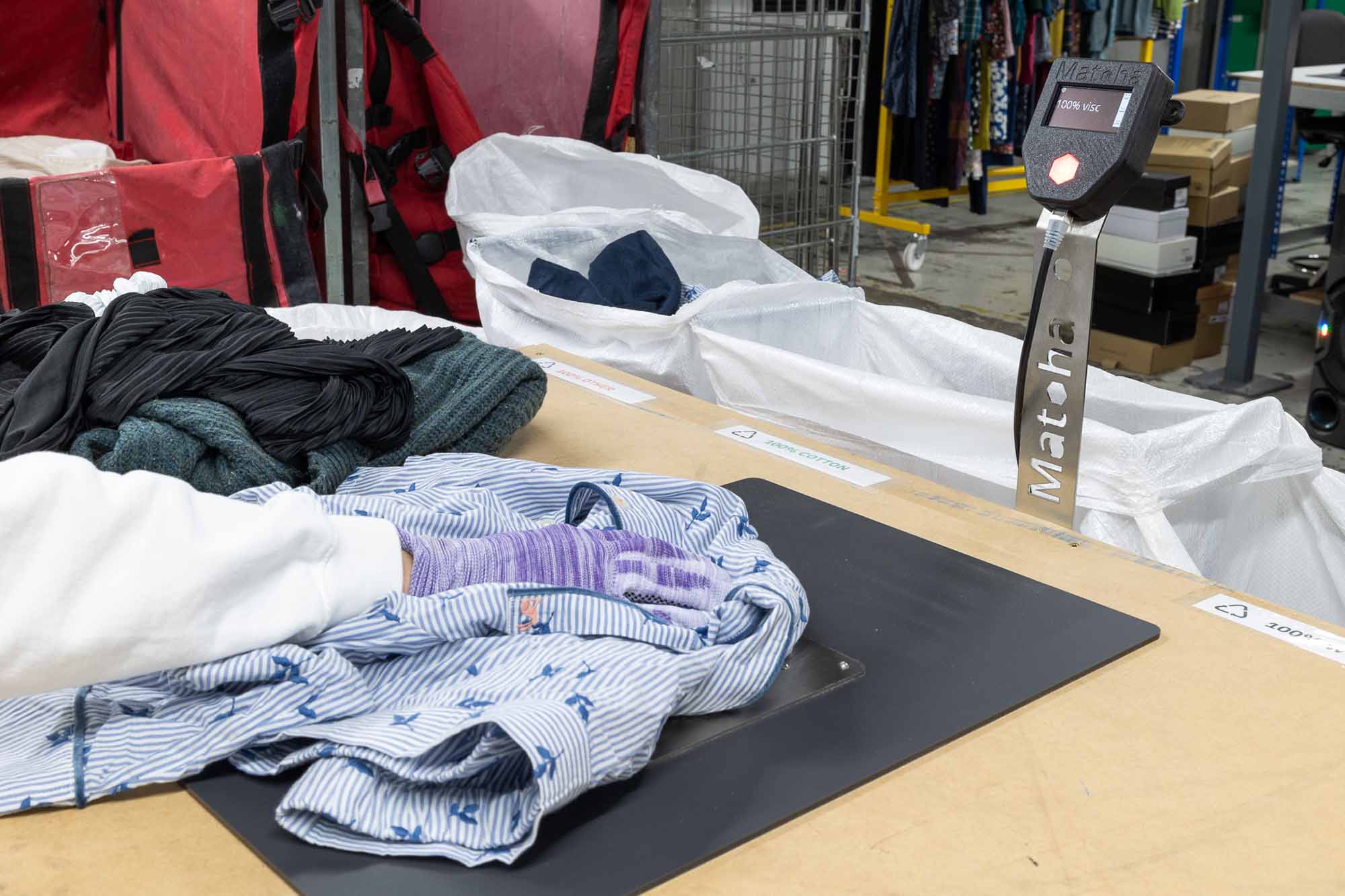
Matoha has created portable plastics and fabrics identifier machines to enable the circular economy. Abigail Turner finds out how the startup is incorporating infrared technology and AI algorithms to optimise this.
A UK startup has developed artificial intelligence (AI) powered material identification scanners to work towards sorting textiles for recycling.
London-based Matoha, which has recently completed its first phase of a £1.5m seed funding round, has turned its idea for easy-to-use, affordable material scanners into a commercial product.
The initial idea to create supermarket-checkout style scanners for plastic, evolved as founders Martin Holicky and Hans Chan realised an “urgent” demand for material identification in textiles. They have now developed manually operated devices that scan, which identify the make-up of textiles in less than a second, enabling businesses to sort waste efficiently “without a huge investment in infrastructure”.
Chris Newton, chief commercial officer at Matoha, told WTiN: “At its core, our technology uses near-infrared (NIR) spectroscopy. That means we shine infrared light on a material and look at how it reflects. That tells us what the material is made of. It sounds simple, but it’s taken a lot of development to get it working in real-world conditions.”
The NIR data is instantly analysed on the device by Matoha’s AI algorithms, giving users immediate answers.
Textile industry's waste problem
Matoha is tackling textile pollution to enable a circular economy that is fast, easy-to-use and affordable. The European Parliament found on average Europeans use nearly 26 kilos of textiles and discard about 11 kilos of them every year. Used clothes can be exported outside Europe but are mostly (87%) incinerated or landfilled. Additionally, it is reported that only 1% of used clothes are recycled into new clothes.
The European Union (EU) is introducing circularity policies. For example, the European Commission is implementing the Waste Framework Directive, which sets the basic concepts and definitions related to waste management, including definitions of waste, recycling and recovery. The aim is by 2025 to be preparing for re-use and the recycling of municipal waste to be increased to a minimum of 55%, 60% and 65% by weight by 2025, 2030 and 2035 respectively.
This in line with the vision of the EU Strategy for Sustainable and Circular Textiles, which wants all textile products placed on the EU market to be durable, repairable and recycled, and to a greater extent made of recycled fibres, free of hazardous substances, plus produced in respect of social rights and the environment, by 2030.
“We’re big supporters of what the EU is doing. The push toward extended producer responsibility and mandatory sorting is long overdue,” said Newton. “But legislation only works if the tools exist to meet it. That’s where we come in. We want Matoha’s tech to be the bridge between policy and practice, giving people the means to do what the regulations are asking.”
Matoha’s technology
As such, Matoha’s devices are designed to be intuitive and easy to use, requiring minimal staff training and have been manufactured in the UK by the company’s in-house team. Newton explained how you can scan a textile sample, and within a second, you are told what it is, for example a cotton or a blend.
He added: “We’ve focused on building something affordable, too, because the tech only matters if people can actually use it. We've now got customers in dozens of countries, using our tools in everything from waste sorting facilities to academic labs.”
Currently, as Matoha introduces its device commercially, it is working with partners who are already handling textile waste, to help them sort what they have already collected. It is infrared light that is a “game-changer” for these recyclers and anyone working with volumes of material, according to Newton.
Every material reflects differently under NIR, like a fingerprint, so the scanners can identify what something is made from without cutting it up or sending off to a lab to be analysed.
“It’s fast, non-destructive, and gives you answers in a fraction of a second,” said Newton.
Using AI algorithms
Matoha’s AI algorithm is about precision and scale. If brands want to recycled inputs, they need to know exactly what is in them. And in turn the recyclers need to have input feedstocks exactly within their process specifications, said Newton, for example in cotton at least 95% needs to be pure.
“Sorted feedstocks is exactly what our AI-powered devices and systems allow our customers to achieve, and give fashion brands a credible path toward circularity,” he added. “AI is already playing a big role. It helps us recognise tricky materials, learn from new data, and adapt to the ever-changing stream of textiles out there. We’re training our models to handle new fabrics and combinations as they come onto the market. AI gives us the flexibility and accuracy we need in a fast-moving industry.”
The challenges that come with building a system such as this, however, is ensuring that there are enough high-quality, labelled samples to train the AI systems with and making sure that it can work reliably in real-world conditions.
“Recycling facilities aren’t clean labs, with items often contaminated,” said Newton. “So our AI must be robust, not just smart. And it must run on low-power devices without constant internet access, which adds an extra layer of complexity.”
Moving forward
Matoha plans to use its £1.5m seed funding round to expand its AI and automation work. The first phase of finding came from Archipelago Ventures and the Circular Plastics Accelerator, with additional investment from Conduit Connect, British Design Fund, Fashion for Good and others.
Long term, Matoha hopes to be an invisible engine behind a more transparent, efficient, and sustainable materials economy. Already the company has shipped its devices to 45 countries. A second phase of the funding round will support the automation and scaling of Matoha’s technology via AI-driven robotic solutions and is moving to a close in H2 2025.
“We designed our devices to be scalable from day one,” said Newton. “A small charity shop can use the same core tech as a giant recycling plant—just in a different form. And as more regulations kick in, we’re ready to grow with the demand. Our customers can simply scale up by purchasing more units and once our automated solutions are ready, also use them.”
Have your say. Tweet and follow us @WTiNcomment









